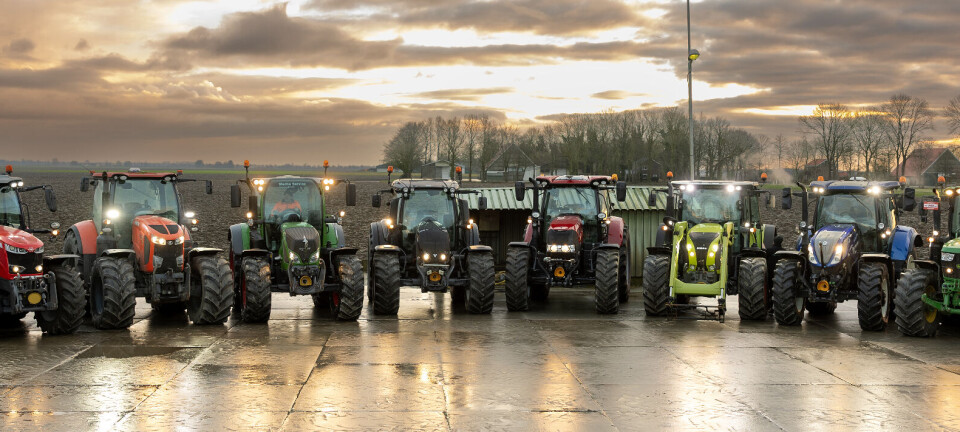Trafikkreglane i England
Det er ikkje berre her i landet det blir fokusert på traktorar i trafikken. Farmers Weekly presenterte nyleg artikkelen under på sine nettsider Farmers Weekly Interactive, www.fwi.co.uk.
Vi gjengir heile artikkelen etter løyve frå våre engelse kollegaer.
Keep it legal on the road
Source: Farmers Weekly 22 March 2002
GUIDE to using agricultural vehicles on the road, by Mike Braithwaite. Licence categories, weights and combinations
Q: Can I drive a tractor on my car licence?
A: Yes.
When you pass a driving test to drive any vehicle which falls within a category B, namely a vehicle having a maximum authorised mass not exceeding 3.5 tonnes and not carrying more than eight seats in addition to the driver's seat, you are automatically given three other categories - F, K and P.
Category F refers to an agricultural or forestry tractor, including any such vehicle drawing a trailer but excluding any motor vehicle included in category H (track laying vehicles steered by their tracks).
Category K refers to any mowing machine which does not fall within category A (motorcycles) and vehicles controlled by a pedestrian. Category P refers to mopeds.
Q: What are the maximum weights of tractors and trailers when used on a road?
A: It depends on what the trailer is capable of carrying as laid down by the manufacturer.
This will be found on the manufacturers plate, which is attached to the vehicle.
And whether the trailer is an unbalanced agricultural trailer - an agricultural trailer of which some, but not more than 35% of the weight, is borne by the drawing vehicle and the rest of the weight is borne by its own wheels.
Provided the trailer is capable of carrying the maximum permitted, the maximum gross vehicle weight of the trailer (the total weight of the trailer and its load) when used for agricultural, forestry or horticultural purposes is 18,290kg.
This means that even though the trailer is probably capable of carrying more weight by design, providing it is being used for one of the above purposes, then it is restricted to the above weight.
It must be stressed, however, that there are other factors which govern balanced trailers - an agricultural trailer the whole of the weight of which is borne by its own wheels - these being determined by the spacing of two axles of the trailer, determined by the table in the Road Vehicles (Construction and Use) Regulations 1986.
The maximum weight of a tractor and trailer combination - the train weight - is 24,390kg.
But if the trailer is an unbalanced agricultural trailer and the distance between the trailer's rearmost axle and the rearmost axle of the drawing vehicle does not exceed 2.9m, the maximum train weight of this combination is 20,000kg.
Q: What can I tow behind my tractor?
A: Provided the tractor is being used for agriculture, horticulture or forestry purposes the vehicle will be classed as an agricultural motor vehicle, which means one of the following list can be towed:
-One agricultural trailer, laden or empty;
-Two unladen agricultural trailers;
-One agricultural trailer and one agricultural trailed appliance; or
-Two agricultural trailed appliances
It must also be noted that no person shall use, or cause or permit to be used, on a road a wheeled agricultural motor vehicle drawing one or more trailers if the weight of the drawing vehicle is less than a quarter of the weight of the trailer or trailers.
The only exception to this rule is unless the brakes fitted to each trailer in compliance with regulations are operated directly by the service braking system fitted to the motor vehicle.
• Mike Braithwaite lectures on the subject of agricultural vehicles on the road. He stresses the answers he has given are based on his interpretation of the law and it must be remembered that reference should be made to the various Acts and regulations dealing with these subjects.






































